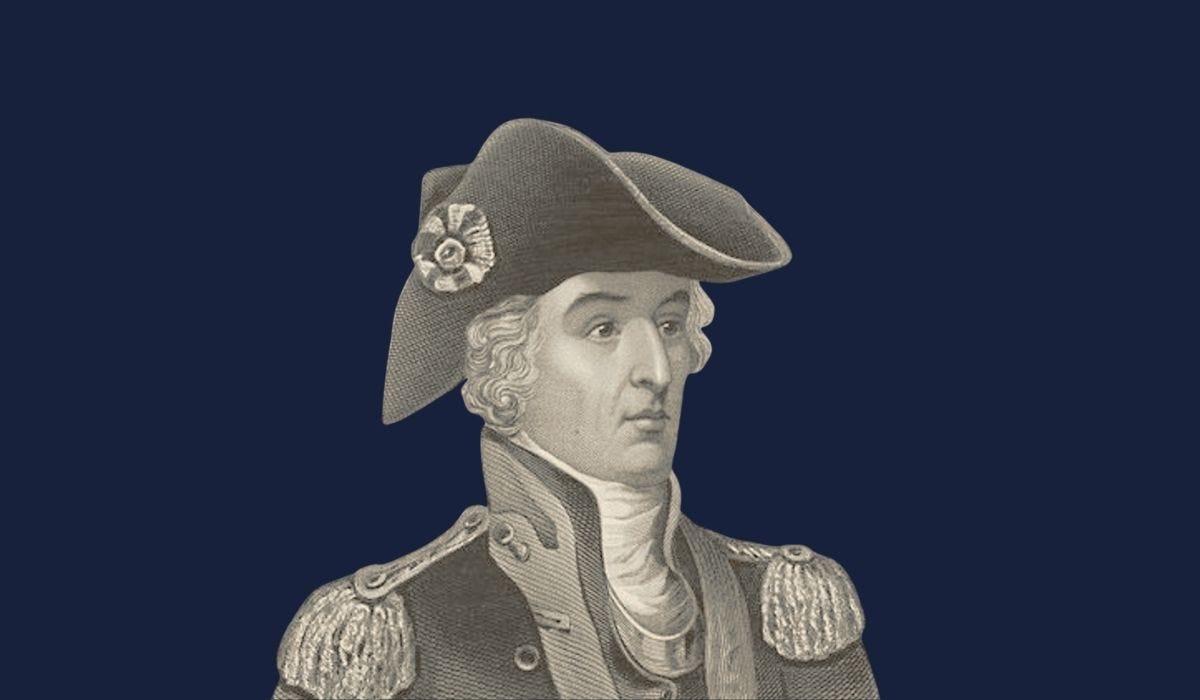The Revolution's Chief Operator
In honor of the Fourth of July, a story about a quiet, behind-the-scenes leader who helped us win the war.
It’s January 1781, and General Nathanael Greene is running for his life.
He’s just taken command of the thinned-out Continental Army in the South. He has a few thousand half-starved troops, very little ammunition, and no real supply line. The Southern campaign has been a disaster up to this point: British forces, led by General Cornwallis, are rolling through the Carolinas and racking up wins. Morale was low in the colonies. Even George Washington admitted the revolution might be a failure.
Most commanders would have hoped for a miracle. Greene chose to retreat.
It wasn’t panic, though; it was strategy. He knew he couldn’t win a direct fight against British troops, so he initiated what became known as the “Race to the Dan,” a series of strategic withdrawals that drew British troops across punishing terrain and further from their own centers of support. As Greene’s men marched hundreds of miles, battling thick mud, bitter cold, and growing hunger, he turned the retreat into an opportunity to reorganize.
He didn’t waste time. He mapped terrain, forged supply routes, and coordinated reinforcements. He split his army into smaller units to create more flexibility. He worked with local militias, understanding they couldn’t be ordered around; they had to be trusted and motivated. He communicated constantly and created room for others to lead.
At a pivotal point, Greene crossed the Dan River and destroyed the boats behind him, leaving Cornwallis stranded and forcing the British to retreat for resupply. He turned south again, re-entered contested territory, and began winning it back yard by yard – not through one great victory, but by slowly grinding the British down. It was a true tortoise versus the hare story.
It’s easy to romanticize battlefield glory. But Greene’s impact came from endurance, logistical thinking, and the systems he built as a foundation to support the fight.
There’s a reason Greene’s story sticks with me.
In my world, leadership often looks less like a charge and more like a long, muddy march. Sometimes you’re outnumbered, resources are limited, and the outcomes aren’t guaranteed. But you still have to push forward as a “happy warrior.”
More often than not, vision alone isn’t enough. You need people who believe in it and build the infrastructure to make it real.
Greene understood that. He wasn’t trying to be a hero; He was trying to create the conditions for success, even if someone else got the credit.
That’s how I think about operational leadership. It’s not about getting applause. It’s about holding the tension between chaos and order. It’s about keeping the wheels turning while the work gets done, the team remains supported, and the long-term vision remains in sight.
We talk a lot about how important vision is, but vision alone doesn’t carry troops across the river and into victory. People, systems, strategic pivots, and patience do.
So this week, as we celebrate our independence, I’m thinking about the chapter of history that rarely gets read: the story of people behind the scenes who built a bridge between vision and execution, so that bold ideas can become reality.
Passion can start a revolution, but it won’t carry it through the winter. When the cold sets in and supplies run short, someone has to stock the food, manage the moving parts, and strike when the moment’s right.
Someone has to turn a mess into a movement.
Greene didn’t win every battle. But without him, we might not have won the war.
I’d love to hear from you: Are there any historical figures you think are often overlooked for their contributions?
From the blog this week:
I write short daily posts on my blog, mostly about nonprofit leadership and operations. Here’s what I posted this week:




